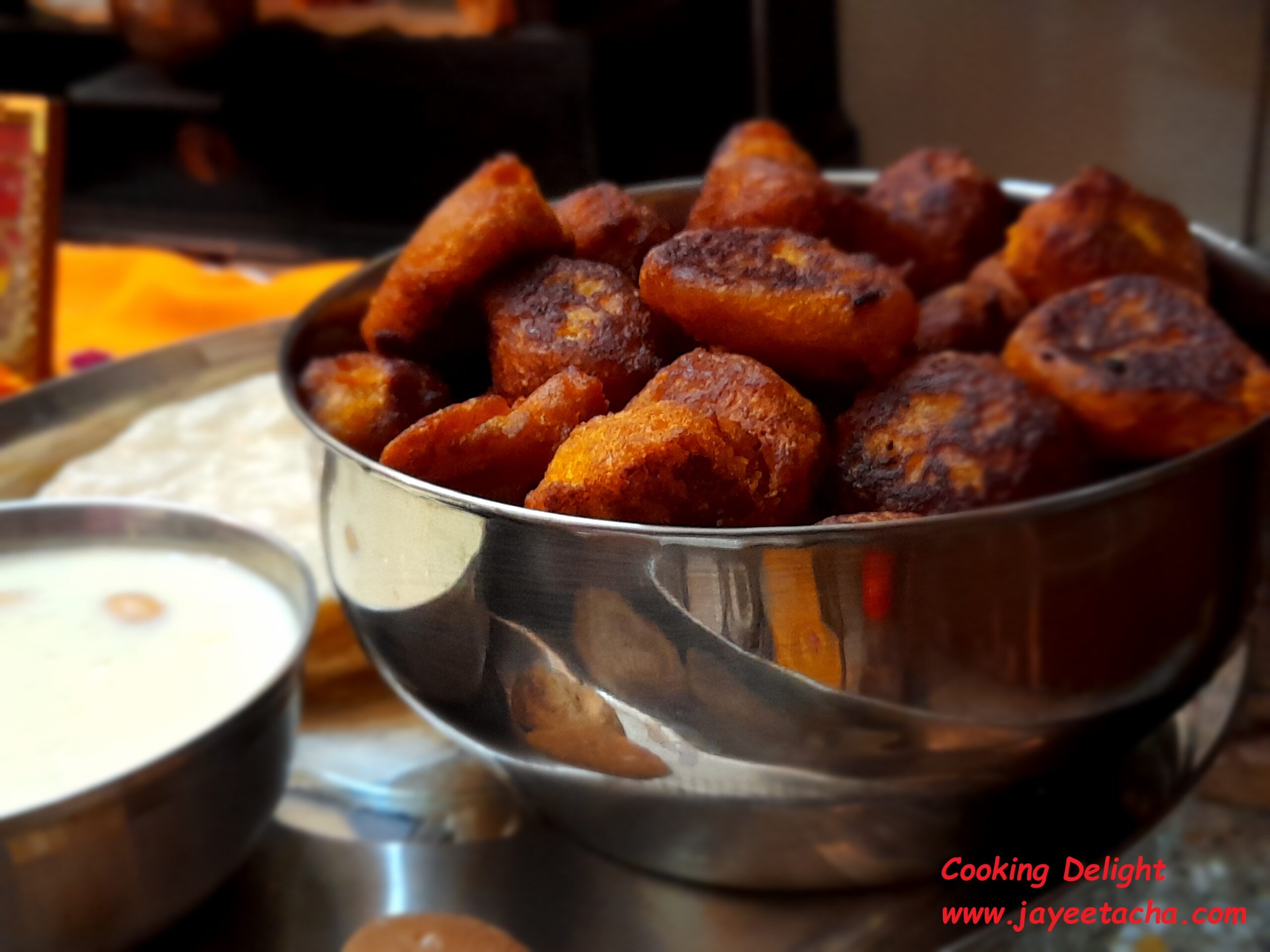Modak is an Indian sweet particularly popular in the Konkan region of India in the states of Maharshtra and Goa. During the festival of Ganesh Chaturthi which is celebrated with much fanfare and grew into a pan Indian festival is incomplete without Modak which happens to be the favourite and religious dish of Lord Ganesha.
I recall that during my last visit to Siddhi Vinayak temple in Mumbai, I got astounded by various types of modaks, from the tiny to huge one that too of different colours getting offered to Lord Ganesha by devotees. This year, I thought to prepare modak or sweet dumplings and offer at my small Ganesh Chaturthi celebration at home. It had to be the traditional modak which was prepared with rice flour with the filling of freshly grated coconut and sugarcane jaggery. The preparation instantly reminded me of ‘Sedhyo Pithe‘, a similar Bengali sweet, prepared in households during Makar Sankranti.
I think what is attractive about modak is its shape almost like a fruit sitting on plate. It actually needs practice to give modak a perfect shape. Being my first attempt the shape was not perfect. However the test was quite good. In fact, these days modaks are made of different ingredients like the chocolate, dry fruits, mawa and many more.
A very happy Ganesh Chaturthi to all with the hope that blessings of Lord Ganesha showers on us.

Prep. time : 30 mins.
Cooking time : 30 mins.
Difficulty level : Moderate
Ingredients for 12 pieces :
- Grated coconut ( ½ of a large coconut)
- Cane sugar jaggery (ankher gur) – 125 gms.
- Green cardamom powder (choto elach guro) – ½ teaspoon
- Rice flour (chaler guro) – 2 small cups (approx. 200 gms.)
- Water – 2½ cup
- Salt – ½ teaspoon
- Ghee or clarified butter – 2 teaspoon
Procedure :
Step 1 : Making of Coconut filling
- Place a kadai over medium flame and melt 1 teaspoon of ghee in it.
- Add grated coconut and mix well with the ghee. Fry the mixture for a minute.
- Now add jaggery to the coconut and mix well. Break the jaggery into small pieces before adding. Cook with frequent stirring till the mixture attains binding consistency. It will take 10-15 minutes.
- Then put the flame off and add cardamom powder. Give it a good mix.
- After that spread the mixture on a plate to cool down. Coconut filling is ready for stuffing.
Step 2 : Making of Rice flour cover & shaping the Modak
- At first boil the water in a kadai. Add salt and 1 teaspoon of ghee into the water.
- Then put the flame on low and add rice flour. Give it a quick mix. At this point you will get a lumpy mixture.
- Now cover the kadai with a lid and turn the gas off. Wait for 5 minutes and let the mixture steam in the residual heat.
- Then transfer the warm mixture into a plate. Knead it to make smooth, soft and crack free dough. Use additional water if needed to get the right consistency of the dough.
- After that divide the dough into 12 equal parts and shape them round. Cover them with a damp cloth to prevent from drying out.
- Now grease your hand with ghee. Take out one round ball and flatten it to a puri size circle by your fingers. The edge of the circle must be thinner than its centre. Now pinch off very little dough to make pleat on the outer side. With ½ inch gap you can make as many pleats as possible. Put 1- 1½ tbspoon full of coconut filling at the centre. Bring together all the pleats gently and seal giving a good shape.
- Repeat the procedure for rest of the balls.
- Always cover the ‘modak’ or dumplings after shaping them and till they are not going to the steamer.
Step 3 : Steaming of Modak
- Boil 2 cups of water in a steamer.
- Then grease the steamer plate with ghee.
- Now place the modak in the steamer plate and steam for 10 minutes on medium flame. Do not overcrowd the plate.
- After that switch off the gas and rest for a while.
- Now modak is ready to be offered to lord Ganesha.
Note :
- Number of modak may increase or decrease depending on its size.
- Adjust the sweetness of the coconut filling according to your taste.
- Always cover the dough and the modak with a damp cloth until it is using. It will help you to get a crack free modak.
- Use same cup for measuring water and rice flour.

















Eat Foodlicious
Love these. Mmm looks good.